In this tutorial, we will show you how to install RetroPie on your Raspberry Pi and turn it into a retro gaming machine.
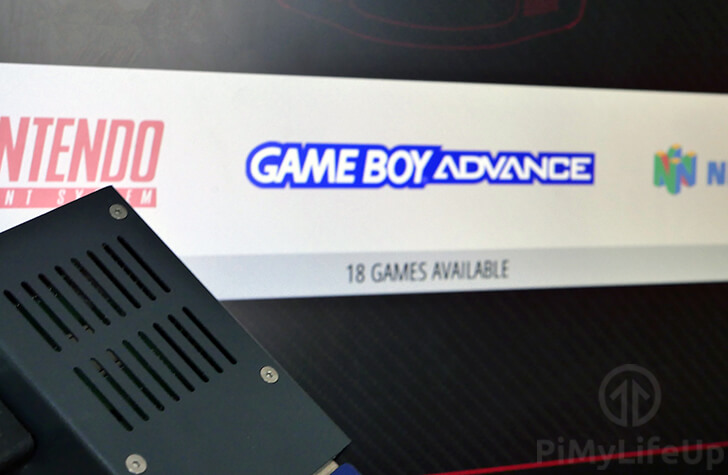
Using RetroPie, you can quickly turn your Raspberry Pi into a highly versatile retro gaming rig that is more than capable of running games for several systems such as the SNES, GBA, PS1, N64, DOS and many more.
We will be showing you the process of installing and configuring RetroPie on your Raspberry Pi as well as how to copy ROMs to your Pi or connect it to a network drive.
For those who do not know what RetroPie is, it is a software package that is built on top of the Raspberry Pi OS. The package contains a range of software that will enable the ability to emulate and play classic games.
RetroPie makes use of EmulationStation as its visual front end and uses the RetroArch project and various other projects to emulate retro games on your Pi.
There are other emulator software packages that you can use instead of RetroPie. Be sure to check them out if you’re feeling adventurous.
Equipment
Below is all the equipment that you will need for setting up RetroPie on your Raspberry Pi.
Recommended
- Raspberry Pi Amazon
- Micro SD Card Amazon
- USB Keyboard Amazon
- USB Mouse Amazon
- HDMI Cable Amazon
- Monitor Amazon
Optional
- Retro USB Controllers or Joysticks Amazon
- Xbox Controller Amazon
- PlayStation Controller Amazon
- Ethernet Cable Amazon or Wi-Fi Amazon
We last tested this tutorial on a Raspberry Pi 5, using the latest version of Raspberry Pi OS Bookworm Lite edition.
Video
In this video guide, we walk you through the process of installing, setting up, and running a retro game using the RetroPie emulator package on your Raspberry Pi.
If you prefer, we also have our written version of the guide included below.
Installing RetroPie on the Raspberry Pi
In this section, we will be showing you how to install RetroPie on to your Raspberry Pi. This process is made a lot simpler thanks to the RetroPie setup script that we will be using.
While RetroPie does provide images for the Raspberry Pi, they do not support the Raspberry Pi 5, and they are not updated very often meaning you will end up with a rather outdated version of the emulation software.
For this section, we highly recommend starting with Raspberry Pi OS Lite as your base operating system. Lite doesn’t come with any of the bloat the full operating system has meaning more room for your retro games to run.
Preparing your Pi for RetroPie
1. Now before we go ahead and install the RetroPie software package, we should first ensure that our Raspberry Pi is running up to date software.
We can achieve this by running the following two commands on the Raspberry Pi.
sudo apt update
sudo apt upgradeCopy2. With the Raspberry Pi’s operating system now up to date, we can now install the packages that the RetroPie setup script requires to operate by running the following commands.
The first package we need is the “dialog” package which is used by the RetroPie software script to build shell script dialog boxes.
The other package we need is the “git” package. We use this package to clone the setup script repository.
sudo apt install -y git dialogCopy3. To ensure we have a consistent location to download the install script, change to your home directory by using the cd command.
cdCopyDownloading and Starting the RetroPie Install Script
4. Now that we have installed all the packages that we need, we now go ahead and use the git software to clone the RetroPie setup script to our Raspberry Pi by running the command below.
Git is a great tool for grabbing this script as it ensures that we download the latest available version.
git clone --depth=1 https://github.com/RetroPie/RetroPie-Setup.gitCopy5. We can now change directory to the “RetroPie-setup” folder. This folder was created when we cloned the RetroPie setup script in the previous step.
cd RetroPie-SetupCopy6. After we change into the directory, we can go ahead and run the actual RetroPie setup script. We need to run this script using “sudo” as the script will install additional packages when it starts up.
This script is what will download and install all of the software to get your Raspberry Pi set up as a retro emulation console.
To start up the RetroPie setup script, use the following command within the terminal.
sudo ./retropie_setup.shCopyInstalling RetroPie on to your Raspberry Pi using the Setup Script
7. When you first open the RetroPie setup script on your Raspberry Pi, you will get a warning about how you should not have paid for your installation, additionally there is a note saying RetroPie itself does not come with any copyright games.
To proceed with the setup process, select the “<OK>” option and press ENTER.
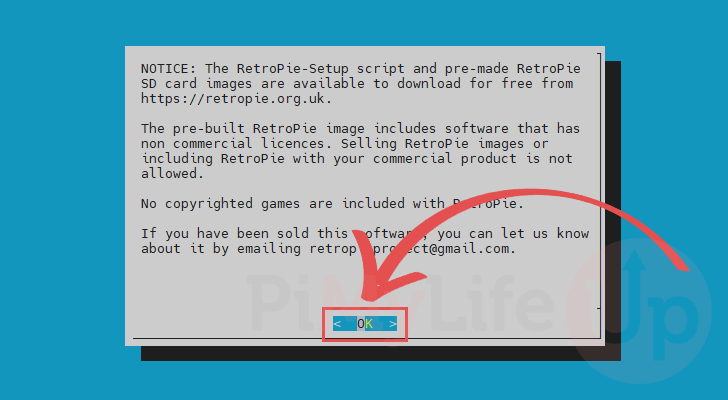
8. If you are running a 64-bit operating system on your Raspberry Pi like we are, you will see a warning that it isn’t yet officially supported.
However, you can safely proceed with this guide by selecting the “<OK>” option.
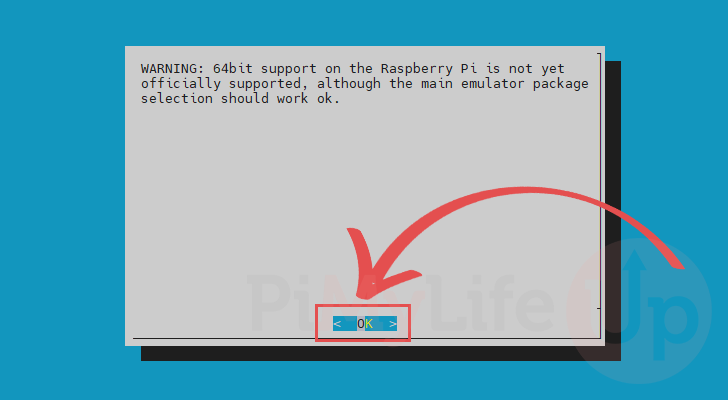
9. You should now be seeing the RetroPie setup dialog on your display.
This dialog has a variety of different options, but the one we want to pay attention to is the “Basic Install” option. This option will be used to install all the “core” and “main” packages of RetroPie on to your Raspberry Pi.
Select this option by using the ARROW keys to navigate to it and using the ENTER key to select it.
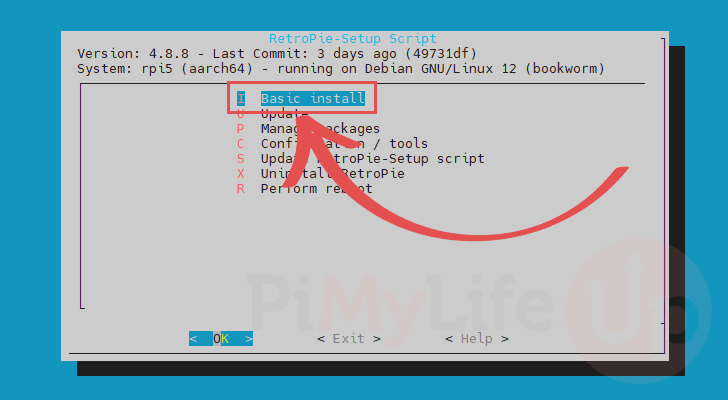
8. Next, you will be presented with a screen asking you to confirm whether you want to install the “Core” and “Main” branches of RetroPie.
To begin the installation of RetroPie on to your Raspberry Pi, select the “<Yes>” option and press ENTER.
Please note that that the installation process can take considerable time as it needs to download, install, and compile several packages. There is no interaction required until the installation process completes so you can go and do other things while the script runs.
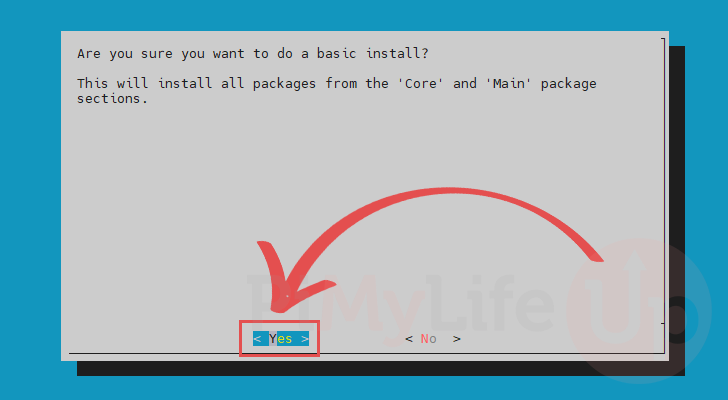
Getting RetroPie to Auto Start on your Raspberry Pi
9. Once the installation process has completed, you will be taken back to the main menu of the RetroPie setup script.
The next step of setting up RetroPie is to allow it to auto start when your Pi powers on. Lucky for us this is a relatively simple process as the setup script handles it for us.
To proceed with enabling autostart, go into the “Configuration / Tools” menu.
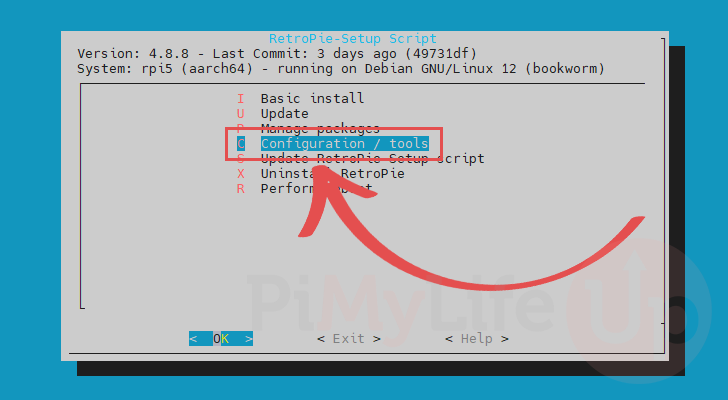
9. Within the “Configuration / Tools” menu you will need to find and select the “autostart” option
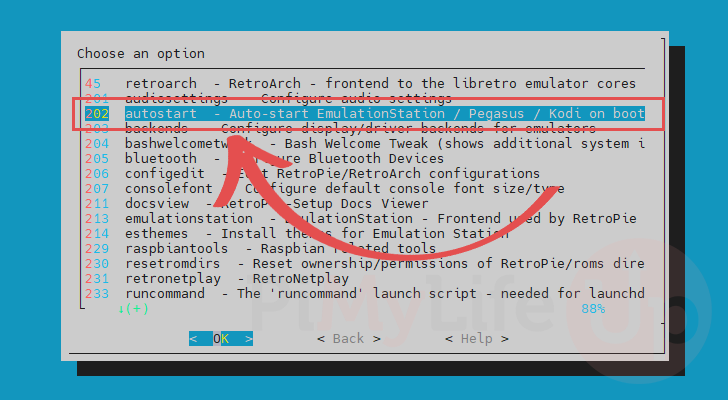
10. Within this menu, you will want to select the first option labeled “Start Emulation Station at boot“.
This option will make the EmulationStation frontend for RetroPie boot up when the Raspberry Pi powers on. This option saves you from needing to start the software manually.
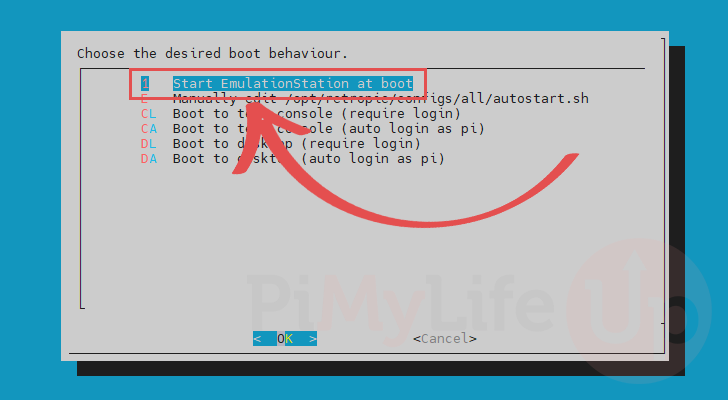
11. If everything has worked correctly, you should see the message indicating that the EmulationStation software is now set to launch at boot.
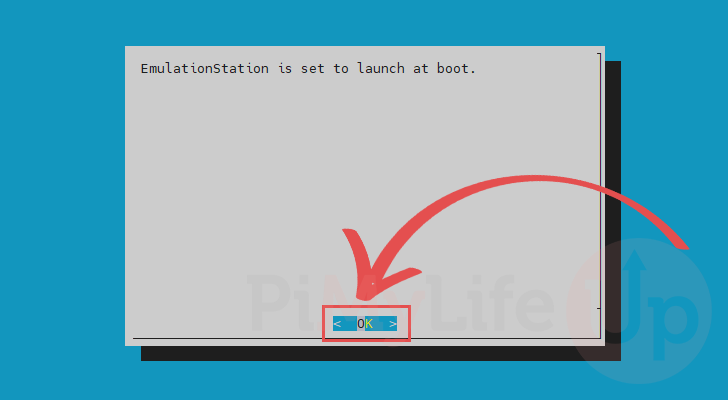
Turning on the RetroPie Samba Shares
13. To make getting ROMs to your Raspberry Pi a significantly easier process we will be enabling the RetroPie SAMBA shares. These shares will allow you to easily copy your ROMs over the network.
To enable the Samba shares, return to the “Configuration / tool” menu and select the “samba” option.
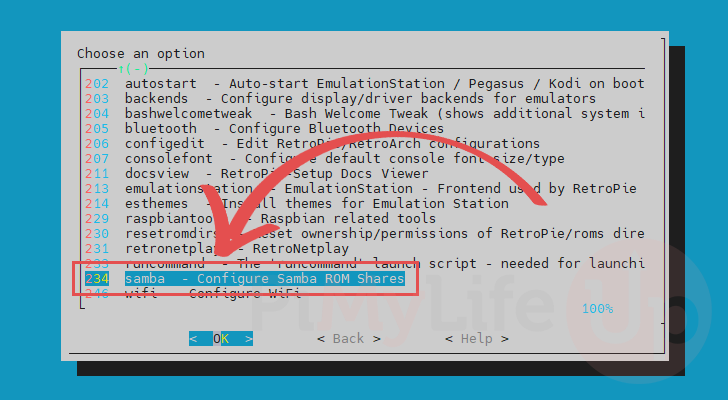
14. Within this menu, all you need to do to enable these Samba shares is to select the “Install RetroPie samba shares” option and press the ENTER key.
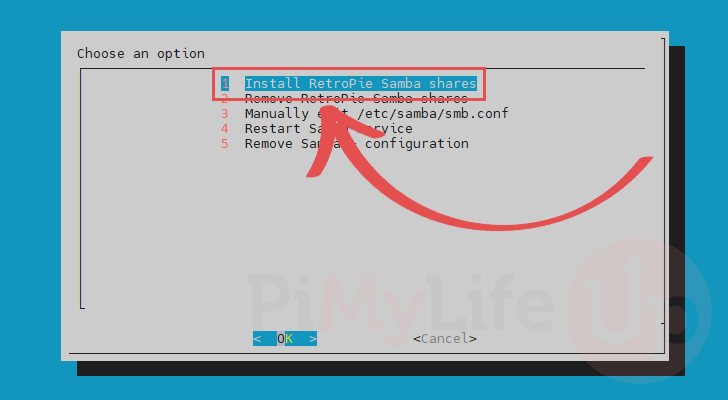
15. You have now successfully installed and enabled the network shares. These shares will make copying your ROMs to your Raspberry Pi’s RetroPie installation a much easier process.
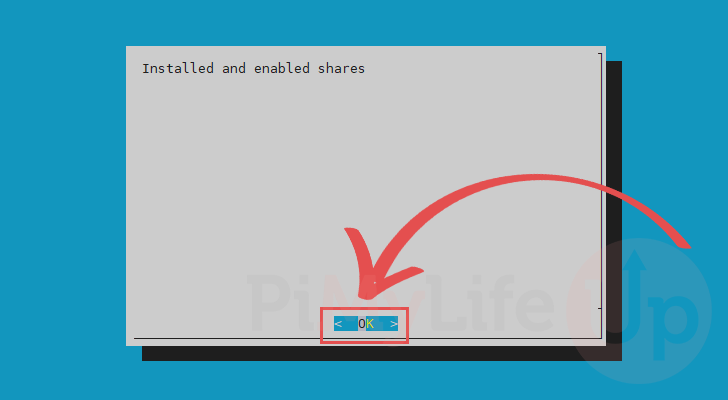
Restarting your Raspberry Pi to Enable RetroPie
16. Once selected, we can now restart our Raspberry Pi to make sure everything is working as it should be.
Start by pressing the ESC key until you get back to the main menu.
Once on the main menu, select the “Perform reboot” option to reboot.
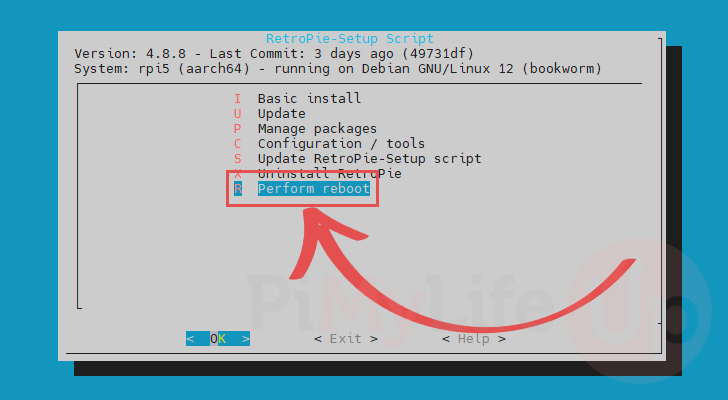
17. You will see a warning that a restart can cause you to lose any metadata changes that you have made.
Since we aren’t actually running RetroPie on our Raspberry Pi just yet, we can safely select the “<Yes>” option.
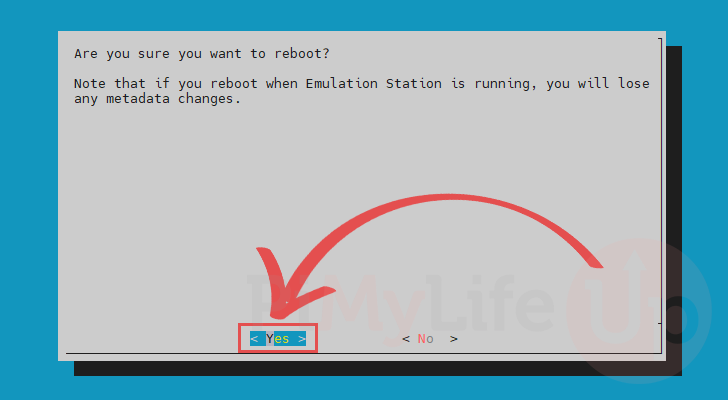
18. Upon rebooting, you should see the EmulationStation startup screen.
This screen indicates that you have successfully setup the RetroPie software on your Raspberry Pi. We haven’t yet plugged in a game pad otherwise the software would work us through setting it up.
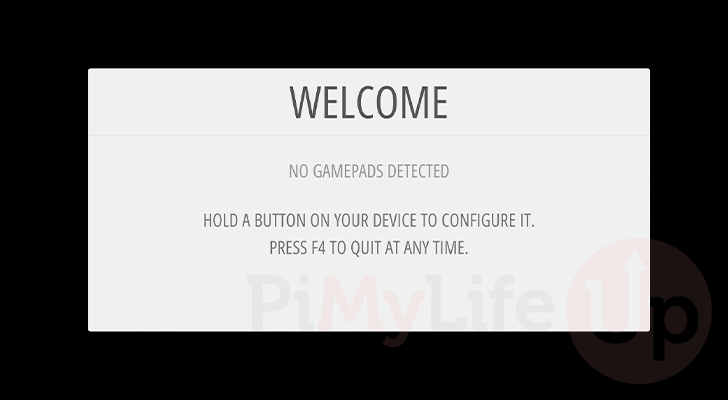
Adding ROMS for the RetroPie Emulators on your Raspberry Pi
To make the most of RetroPie running on your Raspberry Pi, you will want to copy ROMs for all of the retro games you want to enjoy.
ROM is short for read-only memory and is the format in which you will find pretty much all the classic games.
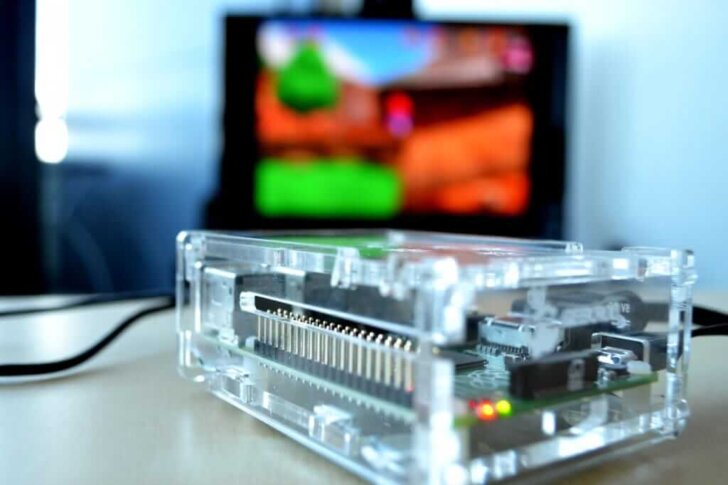
ROMs can be easily found on the internet and since there many different sources it’s best just to google the game you wish to download followed by ROM, e.g. (“Doom ROM”).
There are three different primary methods for transferring ROMS over to your RetroPie, this being USB, SFTP, and SAMBA. We will explore all three different methods below.
Copying ROMs over Samba Network shares
One of the easiest ways to copy ROMs over to your Raspberry Pi for usage with RetroPie is to use network shares. By following our guide earlier, you will have Samba shares set up, so all you need to know is how to connect to them.
Samba is a protocol that allows a Linux device like your Pi to share folders that is also compatible with Windows.
The Samba interface allows you to access the files on your Raspberry Pi over the network without needing to connect with something like WinSCP.
1. For this process, you will need to be on your computer.
On Windows, open a file explorer window, and in the address bar type in the following.
Note: Make sure you swap out the IP address with your own Raspberry Pi’s IP address.
\\192.168.1.106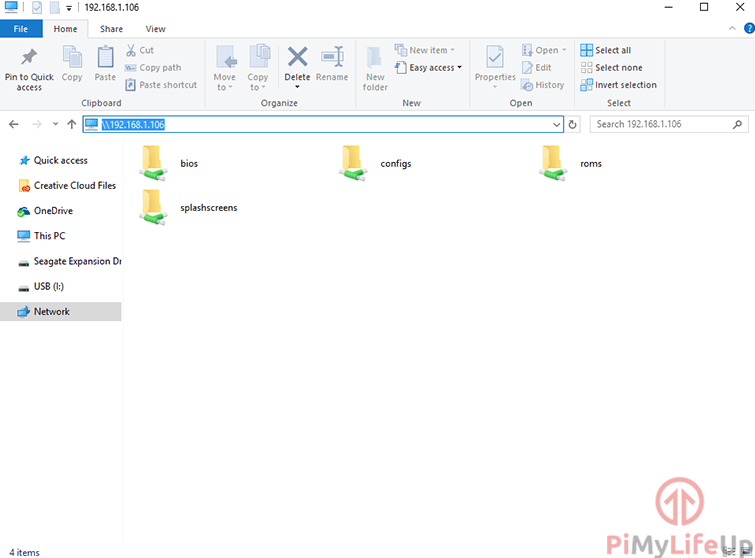
2. There is a chance it will ask for your login details for your Raspberry Pi.
All you need to do to proceed is type in your username and password for your account.
3. Once you have connected, you should now see all the shares the RetroPie software has made available on your Raspberry Pi. You can now copy and files you want over to your device.
For copying ROMs, you will want to go into “roms” and copy the file into the folder of the console it belongs with.
For instance, a SNES game will go in the folder called “snes“.
Copying ROMs from a USB Drive
1. Before we get started, we need to make sure that the USB service is enabled on RetroPie. If it’s not, then this guide will fail to work as it relies on it to scan and create folders on our USB drive.
Let’s get started by going to the configuration screen within RetroPie. Within this screen, select the “RETROPIE SETUP” option to get into the RetroPie setup tool.
2. We should first ensure that we are running the latest version of the RetroPie setup script by selecting the “Update RetroPie-Setup script“.
3. Within the RetroPie setup tool, go to the “Manage Packages” submenu.
Within here, you will need to go into the “Manage optional packages” menu.
In this menu, search for the “usbromservice” and select it.
Finally, select the “Install from binary” option to install the USB rom service to your Raspberry Pi.
4. With the “usbromservice” now installed and the menu still up, go ahead and select the “Configuration / Options” menu.
Within this menu, select the “Enable USB ROM Service scripts“. This option will setup all the scripts that will monitor the USB devices plugged into the Raspberry Pi.
5. Once done, head back to the main menu of the RetroPie setup tool and select the “Perform Restart” option.
6. With everything set up on the Raspberry Pi, we need to ensure now that the USB drive that you want to use is formatted to the FAT32 format.
You can check this on Windows by right-clicking on the drive, clicking “Properties” and looking at the text next to “File System:“.
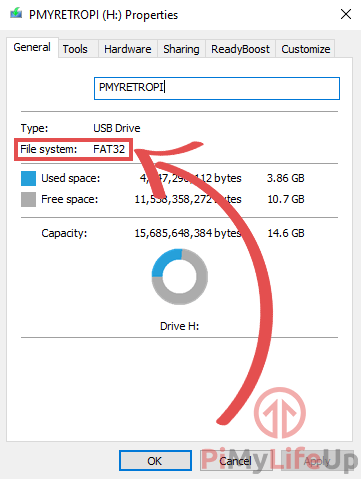
7. On the USB, create a directory called “retropie“.
The RetroPie USB Rom service software will detect this folder when the USB is plugged in and will prepare the directory for copying over ROMS by creating several folders within it.
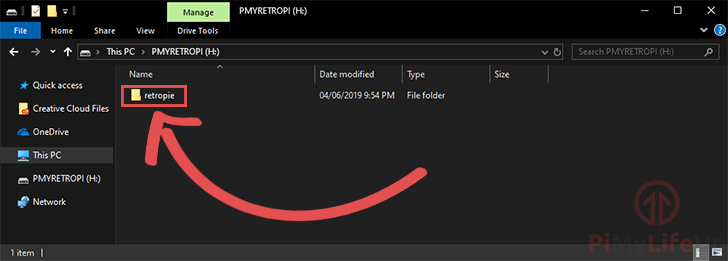
8. Now plug the USB into the Raspberry Pi, give this a few minutes as the Raspberry Pi RetroPie software will be setting it up in preparation for copying over ROMS.
If your USB has a flashing light, wait until it has stopped flashing before you pull it out.
If it doesn’t have a light, then wait a few minutes for the job to complete.
9. Now take out the USB from the Raspberry Pi and plug it back into the computer.
10. Add the ROMS to their respective folders on the USB.
These folders will be in the retropie/roms folder. (Eg. retropie/roms/snes)
Below we have included a screenshot of what the folder layout should look like after the RetroPie software has created all the needed folders.
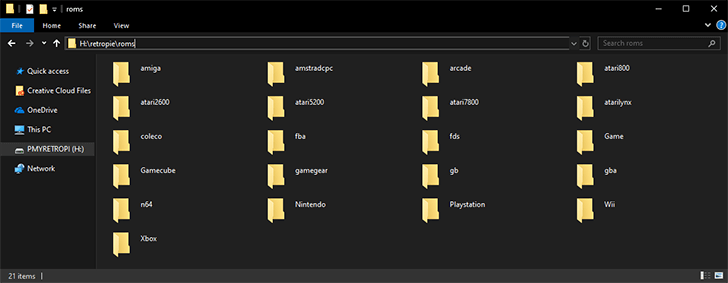
11. Once you have finished copying your ROMs to the USB, plug it back into the Raspberry Pi.
The RetroPie software will immediately start copying these files off of the USB drive. Don’t take out your USB for some time as this process can take considerable time.
12. Refresh EmulationStation by pressing F4, or choosing “quit” from the start menu.
Copying ROMS over SFTP
Thos section will be showing you how to use SFTP to copy a ROM over to your Raspberry Pi’s RetroPie installation.
1. Before you can utilize SFTP to transfer files between your computer and the Raspberry Pi, you will need first to enable SSH.
You can do this by going to the RetroPie “Configuration” menu within the Emulation Station UI. Within this menu, select “RASPI-CONFIG“.
2. Within the Raspberry configuration tool go to “5 Interfacing Options“, then within that menu select “P2 SSH“.
When asked if you would like to enable the SSH server, select “<Yes>“.
You can now select “<Finish>” on the main menu to return to the RetroPie interface.
3. For copying files over SFTP, you will need to utilize a program such as WinSCP to connect to the Raspberry Pi if you are running Mac use something like Cyberduck.
On Windows, go to WinSCP’s download page and download the latest version of WinSCP.
WinSCP is the tool that will interact with the Raspberry Pi and allow us to copy files directly to the Raspberry Pi.
For those who are running a Mac OS X device, you can find the Cyberduck software within the Mac App Store or by downloading it from Cyberducks website.
For this guide, we will be just be focusing on utilizing the WinSCP software, but the connection details will all remain the same.
4. Once downloaded, launch the WinSCP software. It will immediately ask you for new login details.
You will need to enter the following details into the correct fields.
File Protocol: SFTP
IP address: To find the IP address of your RetroPie, go into RetroPie options from the main menu, and select the last option “Show IP address“.
Port Number: 22 (default)
Username: pi (default)
Password: raspberry (default)
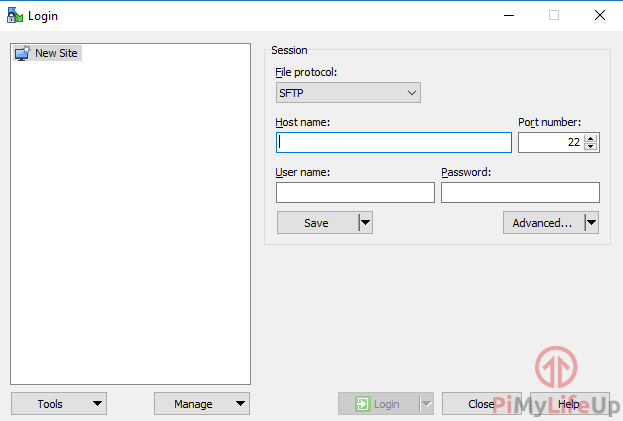
5. Once successfully connected to your Raspberry Pi Retropie, you should pay attention to the right-hand side screen.
Locate the folder named “RetroPie“, double-click on that, once within that folder locate the folder named “Roms” and double-click again to enter that folder.
You should now be sitting in the directory where all your roms will be stored.
The file directory displayed at the top should be something like /home/pi/RetroPie/roms.
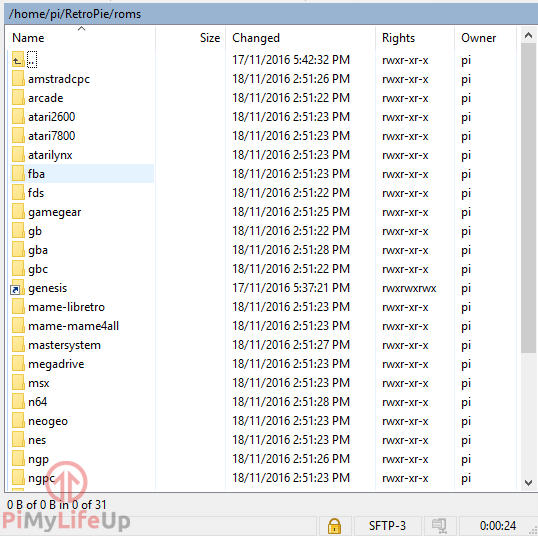
6. Once in the correct folder, all you need to do is drop the files into the appropriate folder for your console.
For example, for a SNES game, you would drag and drop the file onto the folder named “snes“.
The WinSCP software will immediately begin to copy the files you dropped over into the folder. This process can take some time depending on both your hard drive and network speeds.
7. Back on your Raspberry Pi, you can refresh the Emulation Station software by pressing F4, or choosing “quit” from the start menu and relaunching the software.
Your new roms may not show up without refreshing the EmulationStation software.
Connecting a Network Share to Load ROMs
1. Before you connect a network share, you must first make sure you have your ROMs are sorted into the structure that the RetroPie software expects.
You can find this folder structure on your Raspberry Pi by using SSH and running the following command.
ls ~/RetroPie/romsCopyOnce you have your ROMs sorted into folders of the same name, we can proceed with connecting the file share with the RetroPie installation.
2. For this next step, we will be reconfiguring RetroPie’s autostart script so that it will automatically mount your network drive to your Raspberry Pi.
We can begin to modify the autostart script with Nano by using the following command.
sudo nano /opt/retropie/configs/all/autostart.shCopy3. To the top of this file, add the following line.
You will need to replace several bits of information in this line. We will explain each important bit.
<USERNAME> – This text is the username for a user that has access to your shared folder.<PASSWORD> – This text is the password to the user you specified.//REMOTEHOST/roms – This is the network path to where you keep your ROMs, an example of a valid path is something like “//192.168.0.175/e/ROMs“
sudo mount -t cifs -o username="<USERNAME>",password="<password>",nounix,noserverino //REMOTEHOST/roms /home/pi/RetroPie/romsCopy4. Once done, go ahead and save the file by pressing CTRL + X followed by Y and then ENTER.
5 Now that we have added the mounting line to the autostart file, we need to go ahead and restart the Raspberry Pi. When it starts back up, both RetroPie and your Raspberry Pi should be able to see your newly mounted drive.
You can restart your Raspberry Pi by using the following command within the terminal.
sudo rebootCopyConclusion
If you have got to this point in the guide, you should hopefully now have RetroPie up and running on your Raspberry Pi.
RetroPie is a great software package that makes transforming you Pi into a retro gaming machine such an easy process.
If you want to leave some feedback, then please don’t hesitate to leave a comment below.
We highly recommend exploring some of our many other Raspberry Pi projects, especially our gaming related ones.

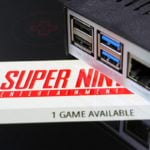
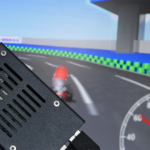

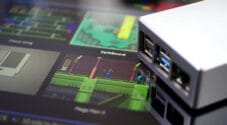
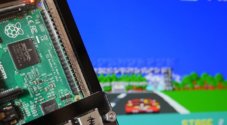
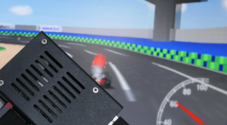
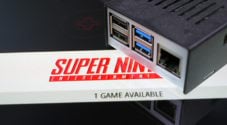

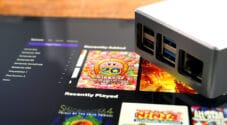
Need faster help? Premium members get priority responses to their comments.
Upgrade for Priority Support